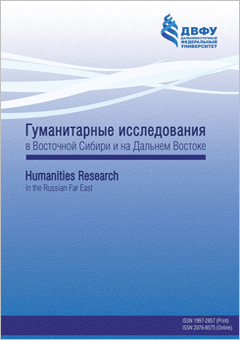Buddhist tales of Kamo no Chōmei about lay people and worldly passions.
DOI:
https://doi.org/10.24866/1997-2857/2022-3/5-17Keywords:
Japanese Buddhism, setsuwa tales, Kamo no Chōmei, HosshinshūAbstract
Kamo no Chōmei’s Hosshinshū (early 13th century) contains tales not only about righteous monks, but also about lay people from noble courtiers to commoners. Their examples show how everyday life itself pushes a person to «escape from this world», to enter the Buddhist path. The narration focuses on suffering, natural and social disasters, as well as unquenched passions such as love, vanity, greed, or on a completely prosperous existence, when it is suddenly revealed to a person in all its senseless impermanence. Anything can awaken a person’s heart, and in this sense a layman and a monk are equal: neither learning, nor even diligent adherence to the precepts prevent the heart from dozing in ignorance – nor passions, nor sins prevent awakening. But if the heart has once awakened, then the best way for a person after that is to become a hermit. The appendix to the article contains a translation of the story «On Saishōgonsuke Narikiyo’s son living on the Mount Kōya» made by the author.
Downloads
References
Камо-но Тё:мэй. Хо:дзё:ки; Хоссинсю: (Записки из кельи; Собрание пробужденного сердца) / Под ред. Мики Сумито. Токио: Синтёся, 2016.
Коляда М.С. «Беседы о делах старины» в традиции поучительных рассказов // История и культура традиционной Японии. Вып. 12. М.: Издательский дом ВШЭ, 2020. С. 47–58.
Петрова А.А. Буддийские и мирские сюжеты в произведении О:э-но Масафуса «Дзоку хонтё: о:дзё:дэн» // История и культура Японии. Вып. 14. М.: Издательский дом ВШЭ, 2022. С. 166–172.
Повесть о прекрасной Отикубо. Записки у изголовья. Записки из кельи. М.: ЭКСМО, 2014.
Трубникова Н.Н., Бабкова М.В. Обновление традиций в японской религиозно-философской мысли XII–XIV вв. М.: РОССПЭН, 2014.
Трубникова Н.Н., Горенко И.В. Предания о чудесах в смертный час в «Диалогах» Св. Григория Двоеслова и «Японских записках о возрождении в краю Высшей Радости» // Вестник Православного Свято-Тихоновского гуманитарного университета. Серия I. Богословие, философия, религиоведение. 2021. Вып. 96. С. 79–94.
Matsuo Kenji, 1997. What is Kamakura new Buddhism? Official monks and reclusive monks. Japanese Journal of Religious Studies, Vol. 24, no. 1–2, pp. 179–189.
Pandey, R., 1998. Writing and renunciation in Medieval Japan: the works of the poet-priest Kamo No Chomei. Ann Arbor: University of Michigan Press.
Downloads
Published
Issue
Section
License
Copyright (c) 2022 Надежда Николаевна Трубникова

This work is licensed under a Creative Commons Attribution-NonCommercial-NoDerivatives 4.0 International License.















